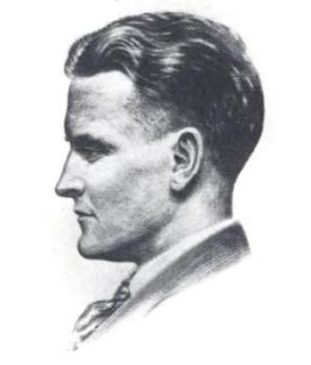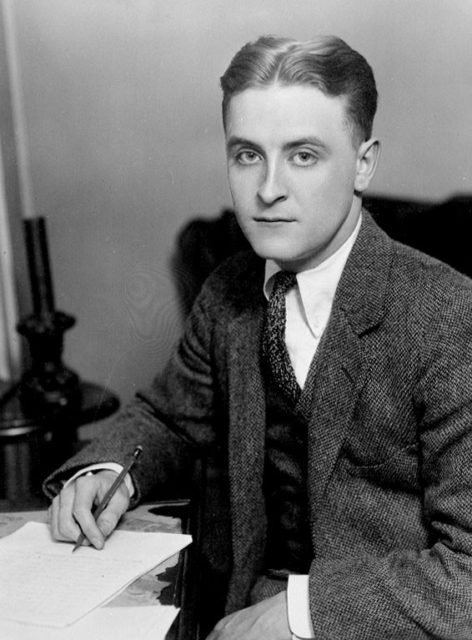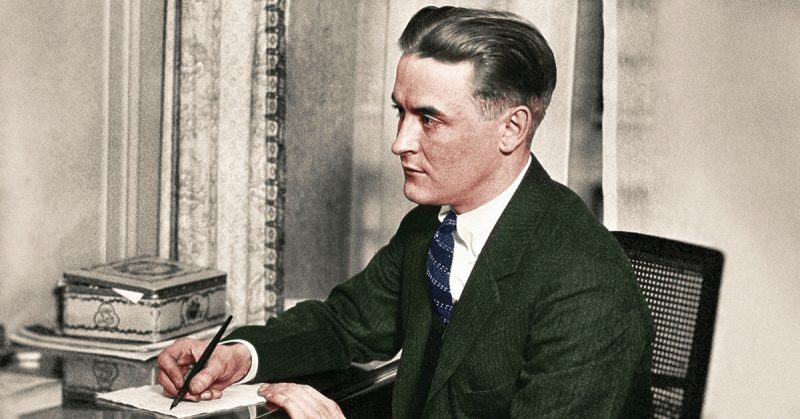One of the life’s — make that death’s — great ironies: Sixties rock star Jim Morrison died in an apartment on Paris’ Right Bank. Legendary writer F. Scott Fitzgerald expired in a ground-floor apartment just off L.A.’s Sunset Strip.
On December 21, 1940, Fitzgerald, a man so closely associated with the East Coast literary community, who spent the 1920s as one of the Lost Generation of exiles living in Paris — among them, Ernest Hemingway, T.S. Eliot, and Gertrude Stein — would take his last breath in the apartment of gossip columnist Sheilah Graham.

The two were lovers and had been living together for the last three years of Fitzgerald’s life. He was married to Zelda at the time, but his wife, suffering from mental illness, was institutionalized in North Carolina.
Fitzgerald ventured West for the same reason so many of his East Coast literary colleagues did: the money.
His first foray into Hollywood was in 1927, his wife Zelda in tow, to work on a script for United Artists. It was rejected and the two went back East. Fitzgerald would return in 1937 to give movies another shot. This time, he came alone.

In 1937, Fitzgerald moved into a villa at the Garden of Allah Hotel on the Sunset Strip. Once owned by Russian actress Alla Nazimova, the 2.5-acre estate was later turned into a residential hotel.
It was there that Fitzgerald worked on the script for Red-Headed Woman, a Rita Hayworth vehicle. He wasn’t the only well-known writer in residence: Ernest Hemingway, Dorothy Parker and Robert Benchley also stayed there from time to time.
In fact, it had become a kind of gathering place for transplanted East Coast literati, but Fitzgerald, in particular, held a particular allure for the Hollywood crowd. “He is famous even in Hollywood, where his meteoric arrivals and departures are discussed in film circles as avidly as they discuss themselves,” wrote Dorothy Spear in the Saturday Evening Post.

Fitzgerald would meet attractive blonde-haired, Brit-born Graham at a party thrown by a mutual friend. Shortly afterwards, the two fell in love.
Like Fitzgerald, Graham was a writer with a keen eye and a fierce wit. After leaving the Garden of Allah Hotel, Fitzgerald stayed with Graham at her Malibu beach house for a while, then moved into the guest house of a friend.

By April 1940, Fitzgerald was living in a walk-up apartment in West Hollywood. (One of his neighbors: Lucille Ball, who at the time was dating Desi Arnaz.)
For Fitzgerald, things were slowly spiraling downward. Studios weren’t thrilled with his work and he continued to drink heavily, while working on a novel, The Love of the Last Tycoon, which would be published posthumously, under the title The Last Tycoon.

That same year, Fitzgerald suffered a minor heart attack at the legendary Schwab’s Drug Store, a popular hangout for the show biz crowd, while standing in line to buy cigarettes.
His doctor suggested he avoid strenuous activity, and Fitzgerald, realizing that a walk-up apartment wasn’t ideal for someone who’s just had a heart scare, moved in with Graham, who lived nearby, in a ground floor apartment.
Fitzgerald would attend his last party on December 13th, at the home of young novelist Nathaniel West, who had made a splash with The Day of the Locust. (Eerily, West and his wife would be killed in a car accident the day after Fitzgerald’s death.)

Exactly one week later, on the night of December 20, 1940, Fitzgerald and Graham attended the premiere of This Thing Called Love, starring Rosalind Russell and Melvin Douglas.
As the couple were leaving the theater, Fitzgerald, feeling dizzy, stumbled and leaned on Graham for support, whispering to her, “They think I am drunk, don’t they?”
The following day, Fitzgerald was eating a candy bar and leafing through his Princeton alumni newsletter. Suddenly, he jumped up from his armchair, clutched the mantelpiece, gasped, and crumpled to the floor. At 44 years of age, F. Scott Fitzgerald, suffering a massive heart attack, was dead.

Fitzgerald’s body was transported to his native Maryland. There was a small turnout at his funeral, only 20 or so people, including his only child with Zelda, Frances “Scottie” Fitzgerald Lanahan, then 19.
The burial took place at Rockville Union Cemetery. Fitzgerald’s family wanted him interred in the family plot at Catholic Saint Mary’s Cemetery, but the Roman Catholic Church denied the request, since Fitzgerald wasn’t a practicing Catholic.
Upon her death, Zelda Fitzgerald was buried next to her husband. In 1975, their daughter Scottie successfully petitioned to have her parents’ remains moved to Saint Mary’s.

Sheila Graham would go to write about her life with Fitzgerald, mostly famously in her 1958 autobiographical book, Beloved Infidel (co-written with Gerold Frank).
It was made into a movie in 1959, starring Gregory Peck as Fitzgerald and Deborah Kerr as Graham. In a particularly poignant scene, Fitzgerald (played by Peck) learns that a play based on one of his stories is being produced in Pasadena and decides to check it out, taking Graham (Kerr) with him.
Read another story from us: The Bizarre “Love Advice” Ernest Hemingway gave to F. Scott Fitzgerald
Want articles by The Vintage News delivered straight to your inbox? Subscribe to our weekly newsletter!
When Fitzgerald arrives, he discovers that it’s a high school production put on by students — many of whom don’t even realize that the author is alive.
